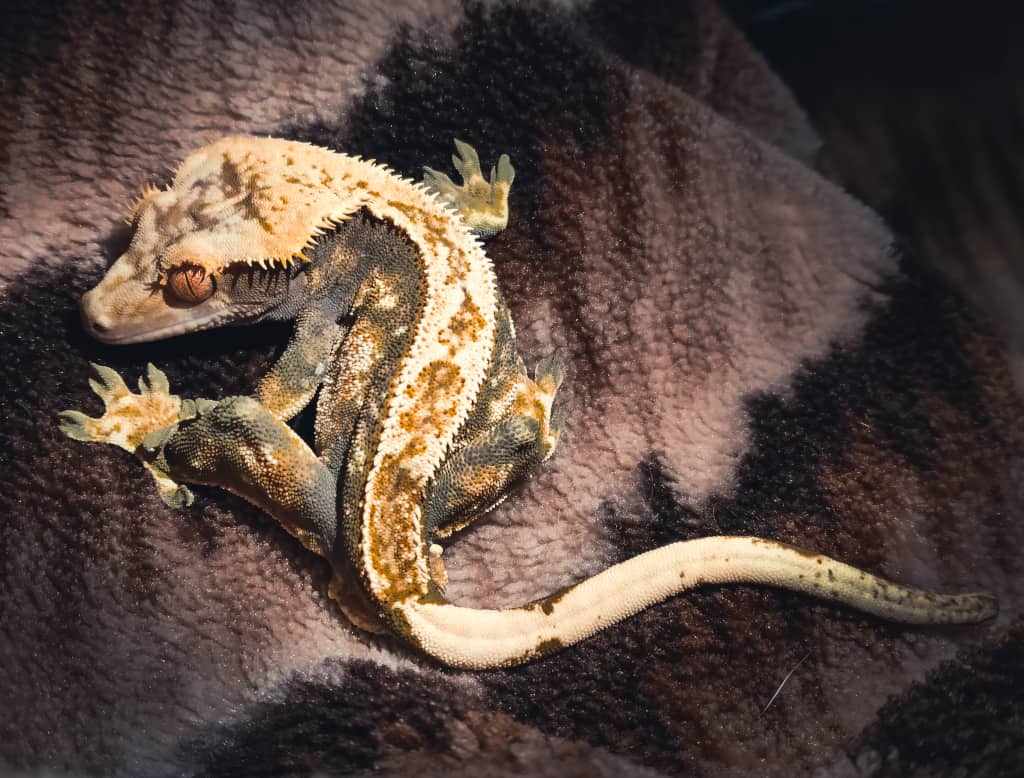
Newly rediscovered in 1994, the crested gecko is fast becoming one of the most popular reptile pets. They are easy to handle and come in a variety of colors and patterns. There is much still to be discovered about the crested gecko, but it is evident now that they are docile and easy to care for in captivity.
Let’s learn about crested geckos in general.
The Look
Its triangular-shaped head and the long ridges that run from its eyes to down its back easily identify the crested gecko. These ridges resemble eyelashes and are what give the crested gecko its name. The crested gecko is also nicknamed the “eyelash gecko” because of this.
The crested gecko does not have eyelids, but rather a membrane that covers its eyes. They use their tongue to clean and moisten their eyes.
The crested gecko has hair-like structures called lamellae on their toes and tail. This helps them to climb and adhere to a variety of surfaces. Their skin feels similar to suede, with soft scales covering its body. They shed their skin regularly and require the proper humidity in their environment to do so successfully.
About The Color Variations
There are no two types of crested geckos that look alike. Their color and pattern morphs are varied, giving them distinctive individuality. They range in color from cream, brown, and green to various shades of red and orange. The color becomes more vibrant at night and is referred to as “fired up”.
The various markings of the crested gecko make for some interesting color combinations. They can be without pattern or have spots, straight stripes, or tiger stripes. These patterns, as well as their coloring, can be refined with selective breeding. This leaves open a wide range of color and pattern combinations.
Crested Gecko’s Daily Activity
The crested gecko is nocturnal, sleeping during the day and waking at night to feed, hunt and mate. They sleep during the day hidden in foliage or up in the lower canopy of trees. The crested gecko is a natural jumper, leaping from tree to tree in the wild.
About The Lifespan
Although there is no certainty about the exact lifespan of the crested gecko, it is estimated that they live an average of 20 years in captivity.
Its Natural Survival Skill
The crested gecko has a prehensile tail that does not grow back. Reasons for tail loss can be stress, improper handling, incomplete sheds, or predator attack. Generally, the loss of the gecko’s tail is not a health threat. When the tail breaks away, the capillaries will close almost instantly to prevent blood loss.
Conclusion
There are many interesting facts about the crested gecko that make it a popular pet. It is a very versatile reptile in color and personality. They are easy to care for and can be quite fascinating to observe. Meanwhile, there is much more to be discovered about this amazing creature.
